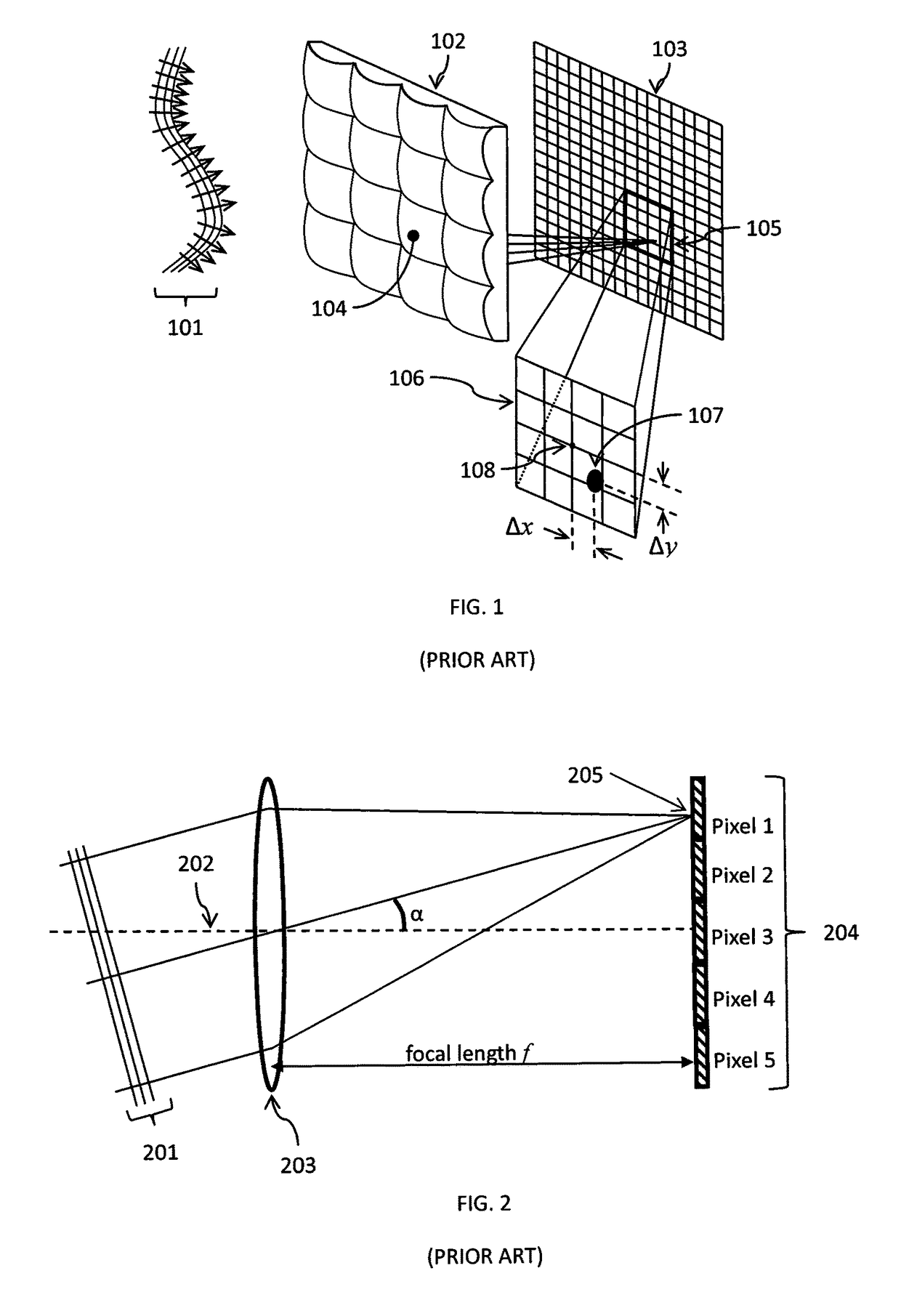Full characterization wavefront sensor
- Summary
- Abstract
- Description
- Claims
- Application Information
AI Technical Summary
Benefits of technology
Problems solved by technology
Method used
Image
Examples
first embodiment
[0075]As the present invention, the fixed, static microlens array 102 of FIG. 1 of the prior art would be replaced with a switchable microlens array. Consecutive measurements would be made with the microlens array switched on for wavefront slope measurements, and with the microlens array switched off for measurements of the spatial distribution of beam power density. This would greatly reduce the spatial sampling period of the beam power density, thereby providing a much more complete spatial beam profile than is provided by Shack-Hartmann wavefront sensors based on prior art.
[0076]As an example, Shack-Hartmann wavefront sensors currently available for purchase, employing CCD or CMOS image sensors, are such that the pitch of the microlens array is 30 to 65 times the pitch of the CCD or CMOS image sensor, and (as previously noted) the spatial sampling period for both wavefront slope and beam power density is equal to the pitch of the microlens array. If the microlens array could be s...
second embodiment
[0080]the present invention is illustrated in FIGS. 4A and 4B. In this embodiment, there are again two switchable microlens arrays as was the case for the embodiment illustrated in FIGS. 3A and 3B. However, for the embodiment illustrated in FIGS. 3A and 3B, the focal lengths of the two microlens arrays are different, whereas in the embodiment illustrated in FIGS. 4A and 4B, the focal lengths of the two microlens arrays are the same.
[0081]Also, for the embodiment illustrated in FIGS. 3A and 3B, the pitches of the two microlens arrays are the same, whereas in the embodiment illustrated in FIGS. 4A and 4B, the pitch of the microlens array that includes microlenses 404 and 405 is half as large as the pitch of the microlens array that includes microlens 403. Therefore, for the embodiment illustrated in FIGS. 4A and 4B, the spatial sampling density of the incoming wavefront slope can be adjusted by switching one or the other of the two microlenses on or off.
[0082]FIGS. 4A and 4B give exam...
PUM
 Login to View More
Login to View More Abstract
Description
Claims
Application Information
 Login to View More
Login to View More - R&D
- Intellectual Property
- Life Sciences
- Materials
- Tech Scout
- Unparalleled Data Quality
- Higher Quality Content
- 60% Fewer Hallucinations
Browse by: Latest US Patents, China's latest patents, Technical Efficacy Thesaurus, Application Domain, Technology Topic, Popular Technical Reports.
© 2025 PatSnap. All rights reserved.Legal|Privacy policy|Modern Slavery Act Transparency Statement|Sitemap|About US| Contact US: help@patsnap.com



